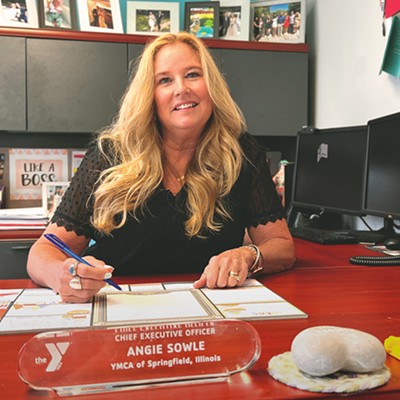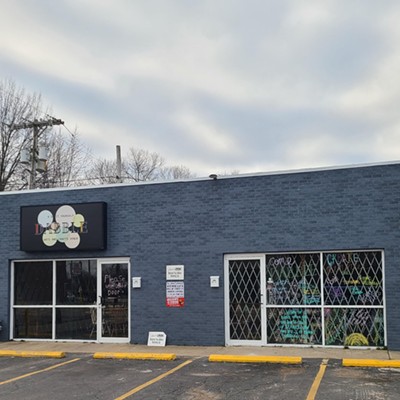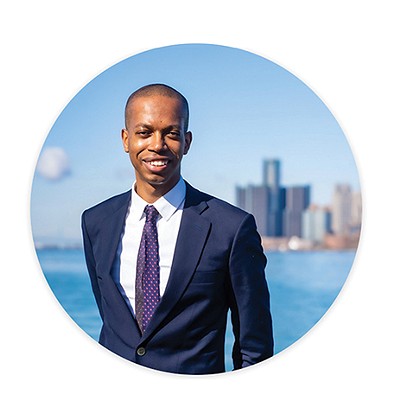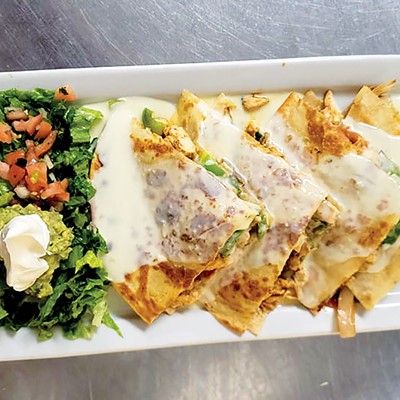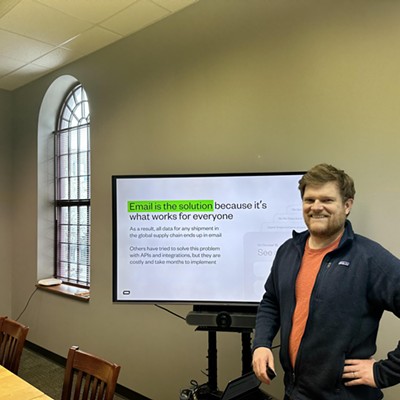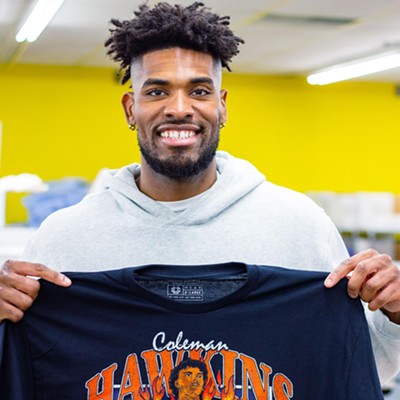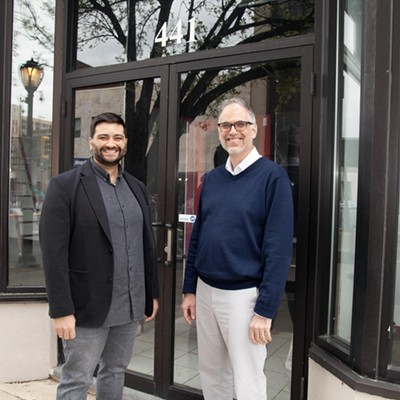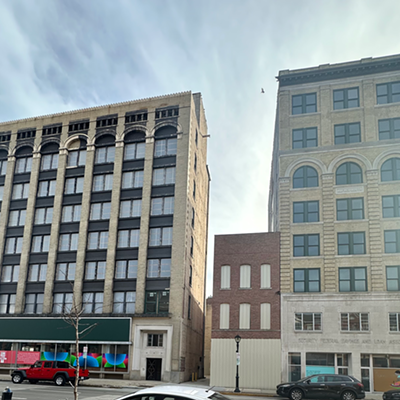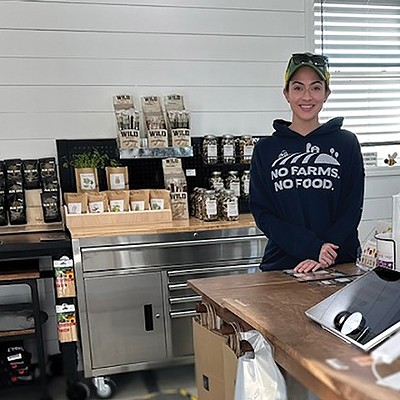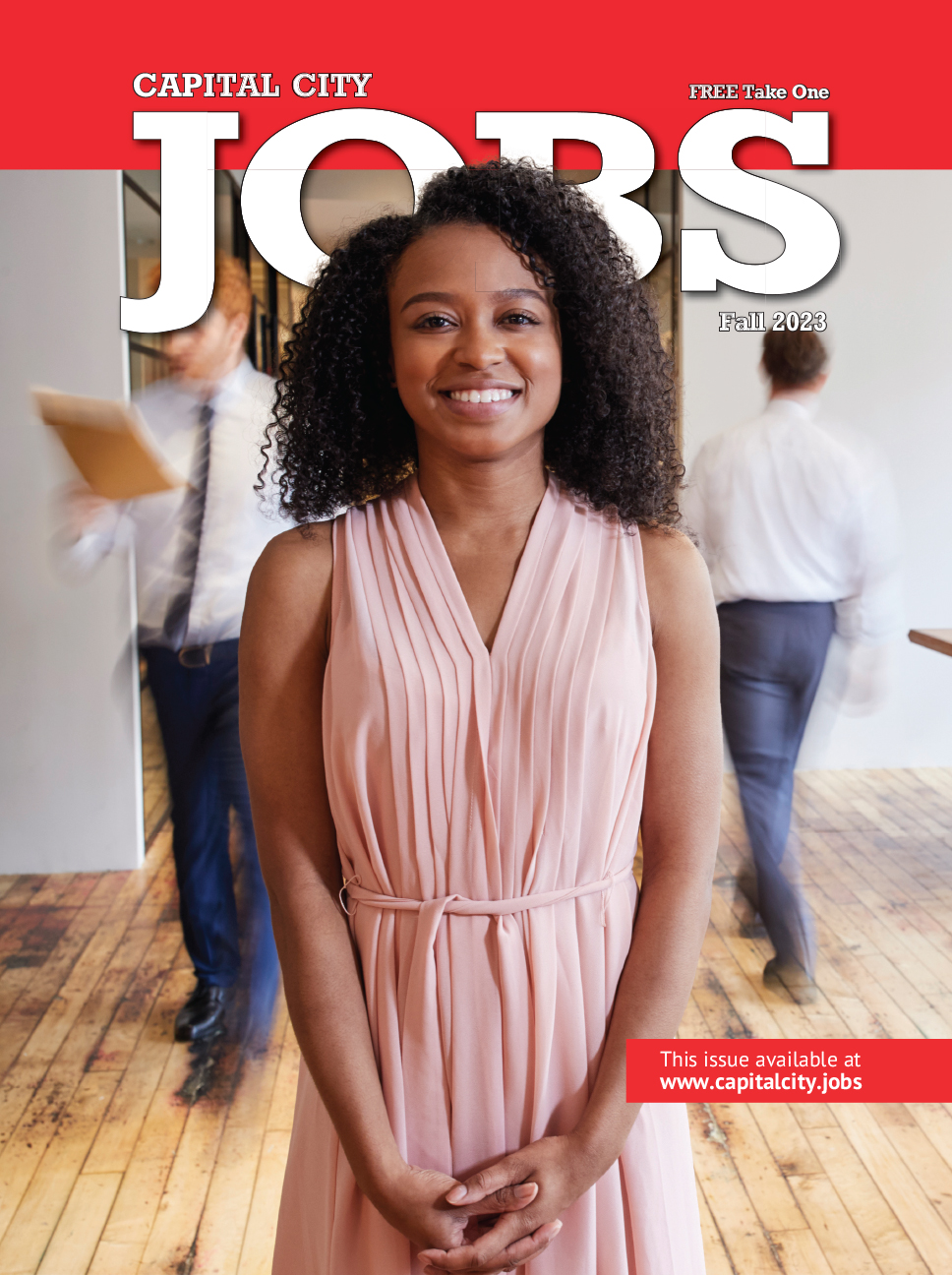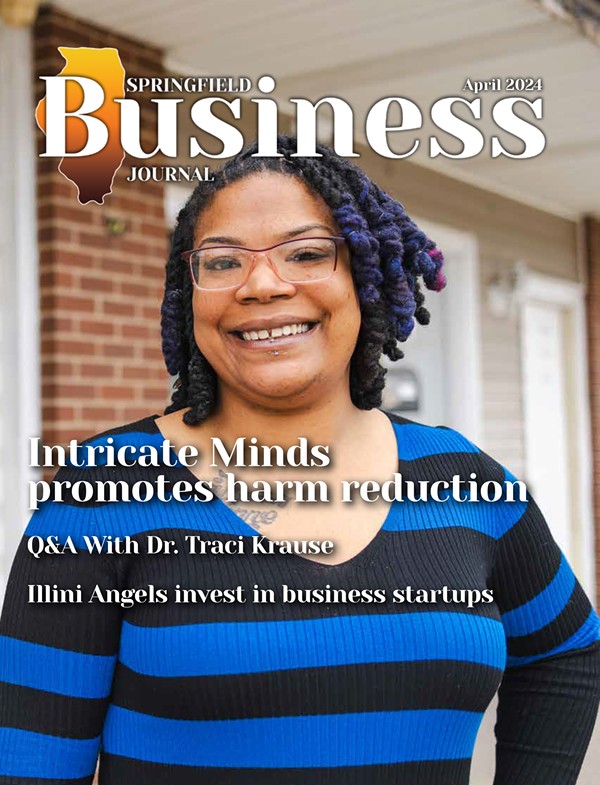By Catherine O’Connor
The Wardrobe may be one of Springfield’s best kept secrets. Tucked away in a quaint former neighborhood gas station that was transformed in the 1960s into a cozy gallery-like shop, the store is an outstanding example of building adaptive reuse. A step inside reveals a quiet, understated microcosm of the boutique universe you might find in Chicago’s Wicker Park, Austin’s SoCo, Park Slope, New York, Frisco’s Hayes Valley or the Pearl Street(s) of Boulder or Portland, where shoppers soak up the urban vibe in eclectic studios and hip cafes.
First time visitors – who often become repeat shoppers – are pleasantly surprised to discover the Wardrobe’s niche offerings of contemporary chic fashions displayed around easy nooks and a small seating area where they can linger in the unhurried atmosphere that sets it apart from the din of mall shopping.
It is clear that owner Kim Dixon and buyer Lisa Hills thrive in the somewhat unsteady retail environment of Springfield, chiefly because of their stellar ability to build relationships with exclusive vendors and customers who know the value of high-quality, well-made clothing, limited-edition jewelry, accessories and one-of-a-kind gifts for baby and home.
The Wardrobe hits the mark for those who are out to score a unique design before mass-produced copies flood the discount department stores. What may be less well-known is that a purchase at the Wardrobe is an investment with a positive ripple effect, not only on the local historic neighborhood business economy, but globally as well.
As a business, the Wardrobe has sustained for more than 30 years in an environment which has seen a cultural shift in fashion styles and retailing priorities. From the original brick flooring – which hints as the building’s past as a Sinclair station in tandem with the hydraulic lift still in place – to the polished hardwood shelving and crystal chandeliers, the store evokes a sense of the past with an eye to the future.
This, coupled with its longevity as a MacArthur Boulevard anchor, surviving in the unsteady currents of Springfield’s economic tides, makes the Wardrobe stand out among fashion retailers.
Since purchasing the business in 2002, Dixon has worked meticulously, taking the concept of local, independent, customer-oriented entrepreneurship to heart. One of the clothing lines carried exclusively at the Wardrobe are the fashions of designer Eileen Fisher.
Recently the store hosted a style show and luncheon featuring the latest pieces in the fall collection and an opportunity for customers to meet Christine Larsen, an Eileen Fisher sales representative, who opened some eyes as she described Fisher’s policy on social responsibility practices in the fashion industry.
As top executive of the company, Fisher herself cares about the people whose work goes into the success of the company. One of 1,000 Fisher company employees, Larsen has seen the positive results of creating a learning lab where employees can work on their own, with benefits from massage and Yoga classes, to personal wellness, family satisfaction, education and upward mobility programs. Fisher has held to her dream of becoming a leader in sustainability with conscious business growth and is involved in the Gross National Happy Project, which is about examining what matters most to people.
The Eileen Fisher Social Consciousness Program encompasses three broad categories: human rights in the workplace, community involvement and environmental sustainability. In addition, Fisher works to monitor the supply chain, to select suppliers who share her business philosophy, facilitating adoption of social accountability training to help those in the clothing industry tackle challenging labor and human rights issues.
As Larsen pointed out, Eileen Fisher is committed to responsible business practices with absolute regard for human rights, setting a global standard for the continual improvement of workplace conditions. This year, Fisher’s company, which has opened new factories in California, boasts a whopping $90 million in sales of products designed and made in the United States.
Eileen Fisher has created a cultural movement that supports community programs in locations near their offices and stores, while empowering employees to participate in activities to directly influence women’s independence, health and wellbeing. The company provides charitable support in the form of merchandise and gift certificates, direct contributions and matches for personal contributions and volunteer service of up to $1,000 per employee, per year.
In an amazing move, Eileen Fisher has been able to extend this effort overseas by fostering the Handloom Project, employing local weavers using traditional techniques to create one-of-a-kind accessories to complement her fashion lines. Going a step further than many cooperative entrepreneurship projects in third world countries, this program is fostering sustained, economic change and safe working conditions because of Fisher’s significant financial and highly recognized business muscle.
Many of the luscious silk, cotton and wool Fisher design pieces sold at the Wardrobe have a tag designating that the finished fabric is “bluesign certified” ensuring that the textile process, from raw material to finished product, has met the goal of sustainable practices in the areas of dyes, chemicals, water and energy usage. The sustainable environment commitment also includes glass/plastic/aluminum recycling in factory and office locations, environmentally friendly cleaning supplies, organic cotton products and efforts to expand on the recent move toward American-made materials and production.
Catherine O’Connor wrote Message in the Bottle, a history of the early nineteenth century women’s reform movement in Illinois. She is also the chair of the Springfield Weaver’s Guild, which furthers the study and work of textile artists in the region.


